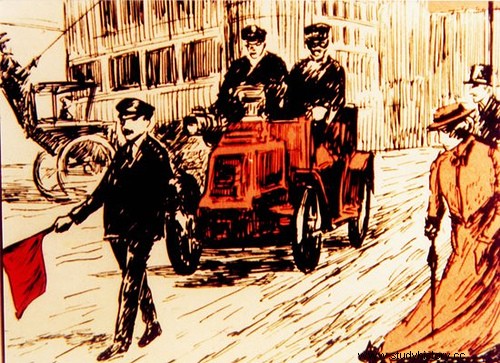The first self-propelled vehicles, with their huge steam boilers, appeared in the 18th century; the first motor vehicle powered by an internal combustion engine with gasoline would not arrive until 1885. Logically, and in the face of those new protagonists, traffic regulations had to be changed. We already spoke at the time of The Locomotive Act or the red flag, enacted in Great Britain in 1865, which established speed limits of 6 km/h in the countryside and 3 km/h in cities, in addition to the obligation to circulate, in front of the self-propelled vehicle, a man with a red flag or lantern warning pedestrians, horseback riders, and horse-drawn carts of the proximity of a self-propelled machine.

On January 28, 1896, Walter Arnold by East Peckham (in the county of Kent) became the first person in Britain to be penalized for speeding. It was traveling at about 8 miles per hour (almost 13 km/h) when the maximum speed allowed in the city was 2 miles (just over 3 km/h). The penalty imposed on him was one shilling and the costs of the process. The curious thing is that the policeman who arrested him, after the corresponding chase, was on a bicycle . That same year, on August 17, Bridget Driscoll she became the first victim. Arthur Edsell was driving his brand new Roger-Benz through the Crytal Palace neighborhood (London) when he ran over Bridget, when he fell he had the bad luck to hit his head and die instantly. Arthur was traveling at 4 miles per hour... also speeding .
Sources:Speed history, The Victorians
